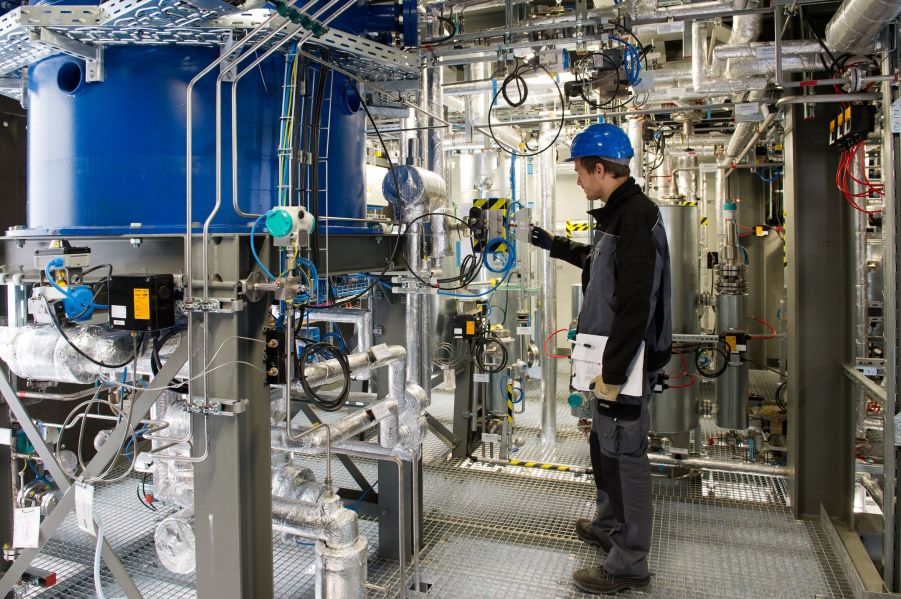
Porsche’s Synthetic Fuel May Actually Make Gas Cars EV-Clean
Besides efficiency and low-end torque, fewer CO2 emissions are one of the biggest advantages EVs have over ICE cars. However, even if and when EV batteries become truly affordable, gasoline- and diesel-powered cars won’t just disappear from roads. And not every classic car owner locks their vehicle up like a museum piece. This is why Porsche recently announced it was developing a carbon-neutral synthetic fuel. And it looks like this ‘e-gasoline’ is more than just wishful thinking.
How does Porsche plan on making this synthetic fuel—is it even renewable?

It seems a bit odd that Porsche is touting a carbon-neutral synthetic fuel, given its recent hot-water dunk over emissions. However, it’s not the only high-end automaker to work on such a fuel. Last year, McLaren announced that it was supporting synthetic fuel development. BMW and Aston Martin also support it, Evo reports.
Plus, Porsche isn’t the first Volkswagen Auto Group company to weigh in on synthetic fuels. Back in 2015, Audi collaborated with German company Sunfire to create an ‘e-diesel’ pilot plant. And the fuel itself did have a “net-zero carbon footprint,” Time reports.
Admittedly, the plant only produced about 40 gallons of e-diesel a day, the International Business Times reports. But still, the plant and its technology showed promise, Jalopnik reports. And it seems the lessons Audi learned making its synthetic diesel fuel have helped Porsche with its synthetic gasoline.
The ‘eFuel,’ as Porsche calls it, starts as CO2 and water, or rather, CO2 and hydrogen. Carbon-capture technology filters CO2 from the ambient air, Hagerty reports, while the hydrogen is made via water electrolysis. Once made, the gases are converted into liquids and react together to make methanol, and then hydrocarbons. Porsche is licensing the synthetic fuel production technology from ExxonMobil, Roadshow reports, but the basic process, Fischer-Tropsch conversion, is well-known.

Porsche’s synthetic fuel isn’t quite ready yet. The German automaker, together with Siemens Energy, the Italian firm Enel, as well as Chilean firms AME and ENAP, is making a pilot plant in Chile. This plant has on-site wind turbines to run the electrolysis and, presumably, off-set any other energy-related CO2 emissions the fuel production releases.
But, while it’s still a pilot plant, Porsche’s synthetic fuel plans are a bit more ambitious than Audi’s plans were. The first 34,340 gallons of eFuel should be ready by 2022, Car and Driver reports.
An LCA can reveal if an ICE car burning this synthetic fuel releases EV-level CO2 emissions
Using this synthetic fuel instead of conventional gasoline comes with several advantages, Hagerty reports. It has fewer impurities, thus cutting down on NOx and other non-CO2 emissions. That includes harmful soot and particulate emissions that can cause respiratory and other health issues, IEAM reports.
And, most crucially, Porsche claims its eFuel can reduce CO2 emissions from ICE cars by 85%, Autoblog reports. The VP of Porsche’s motorsport and GT cars, Dr. Frank Walliser, even claims it could make ICE cars match EVs’ life-cycle emissions, Road & Track reports. But is that really feasible, or just hyperbole?
To really compare ICE cars’ and EVs’ CO2 emissions requires a life-cycle analysis, sometimes called a life-cycle assessment. LCAs look at the costs, materials usage, and emissions involved in making, using, and disposing of a product. This is the ‘cradle-to-grave,’ or, in regards to cars, the ‘wheel-to-well’ approach. And learning about and performing these was part of my chemical engineering education.
To be clear, EVs aren’t completely emissions-free, especially when it comes to making their batteries. However, provided the electricity sources are clean enough, EVs do produce fewer CO2 emissions than ICE cars. This is mostly because they don’t burn fuel when running, CarbonBrief, the European Environmental Agency, and the US Alternative Fuels Data Center report.
But what if, before that fuel was burned, the CO2 it would produce was removed from the atmosphere? That’s what Porsche is trying to do by making synthetic fuel from captured CO2. And by using wind power, the net carbon usage from fuel production drops lower still. At least, that’s the on-paper promise.
With some caveats, the math and science say this is actually possible

Understandably, Porsche hasn’t released any hard data on the eFuel plant. Plus, even if it did, full-scale rigorous LCAs often take months or years to perform. However, the German automaker’s claims and promises might be possible.
In a 2020 paper published in the Journal of Sustainable Energy & Fuels, Liu et al. performed an LCA on fuels produced via carbon capture and Fischer-Tropsch synthesis. And, although the synthetic fuels weren’t fully carbon-neutral, they did have fewer lifetime CO2 emissions than conventional ones.
Admittedly, these results are dependent on low-carbon electricity. However, the bottom line is, there’s a very good chance Porsche’s eFuel lives up to its promises. That’s huge.
True, burning gasoline, even a synthetic one, won’t ever be as clean at the point of use as hydrogen or a battery. But the promise of a carbon-neutral fuel has been kicking around since the earliest days of biodiesel, with seemingly little to show for it. For the people who may not be able to afford an EV, or whose lifestyles don’t allow for one, this is a big deal. It’s something I, someone trained in science and a classic car and motorcycle enthusiast, once held as a dream.
Follow more updates from MotorBiscuit on our Facebook page.


